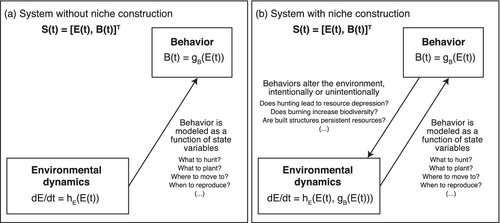Paper reconciles two branches of evolutionary science into one framework

A review paper published in this week's Evolutionary Anthropology reconciles competing approaches in the sciences of human behavior. Co-authored by SFI Applied Complexity Fellow Michael Price and Elspeth Ready of the Max Planck Institute for Evolutionary Anthropology, it examines two branches of evolutionary science that are often regarded as rivals and presents a general framework to reconcile them.
The authors hope it will serve as a guide to evolutionary human scientists, especially graduate-level archaeologists and anthropologists.
The first approach, niche construction theory (NCT), focuses on how humans modify the landscape around them to create a foothold in evolutionary space. NCT originated in evolutionary biology. In a seminal 2003 book on the topic, SFI External Professor and Science Board Fellow Marc Feldman, former SFI Science Board member Kevin Laland, and John Odling-Smee defined it as "the process whereby organisms, through their metabolism, their activities, and their choices, modify their own and/or each other's niches."
According to Price, when the concept of niche construction was ported from evolutionary biology to archaeology and anthropology, it lost much of the mathematical machinery inherent in Feldman, Laland, and Odling-Smee's work that allowed for precise predictions.
The second approach, Human Behavioral Ecology (HBE), starts from "the idea that organisms should attempt, however imperfectly, to behave in ways that maximize their fitness," write Price and Ready. As used in archaeology, HBE is more analytical and predictive than NCT, and often associated with simple models for how people foraging for food would decide which prey to hunt for, given the energetic trade-offs.

So which is the better approach? Both, according to Ready and Price. They see HBE and NCt as special cases of a broader framework of human behavior. They advise perplexed scientists to transcend the either-or decision and to craft the best model for their data.
"What we hope is that people are going to basically be inspired to make good models that they can test with the data they have," Price says. "If they're doing the models and making their assumptions very clear, I think I would be pretty indifferent to whether they call it one approach versus the other."
"Human behavioral ecology and niche construction," is published in Evolutionary Anthropology.
More information: Elspeth Ready et al. Human behavioral ecology and niche construction, Evolutionary Anthropology: Issues, News, and Reviews (2021). DOI: 10.1002/evan.21885
Provided by Santa Fe Institute




















